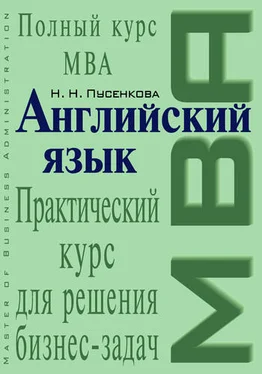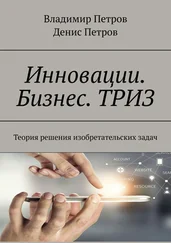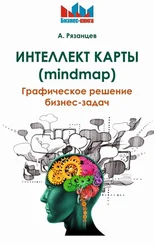medical insurance
life insurance
paid holidays
sick leaves
retirement programs (pension plans)
training and development programs
child care
recreational activities
transportation allowance
maternity/paternity leaves
credit union facilities
ESOP (Employee Stock Ownership Plans)
profit sharing
bonuses
relocation expenses
fringe benefits
wages and salaries
stock options
induction process
mentors
job security
grievance committee
outplacement services
severance pay
employment contract
cafeteria plans [1] Cafeteria plans are flexible benefits that became popular during the 1980s. With these plans, an employee allocates a set amount of benefit dollars according to personal choice.
Exercise 3. You are a journalist working for Business Week and you are to interview Frederick Herzberg who developed the Two-Factor Theory. Invent a dialogue between these two individuals using the following briefing materials.
Herzberg’s Two-Factor Theory
Frederick Herzberg’ s theory is known as the motivator-hygiene theory. His basic premise is that dissatisfaction and satisfaction are not opposite ends of a single continuum. Rather, the opposite of dissatisfaction is no dissatisfaction, and the opposite of satisfaction is no satisfaction.
The way to move an individual from dissatisfaction to no dissatisfaction is by utilizing hygienes. These are factors that are extrinsic to the work itself. Hygienes are factors concerning the environment within which the work is performed like the color of the walls, the temperature of the room, or the paving in the company parking lot.
Unfortunately, hygienes are not the factors that can move your employees toward satisfaction. These factors simply placate employees, but do nothing to truly motivate them. Before the real motivation can be addressed, employees must have sufficient hygienes so as not to be dissatisfied.
To move employees from no satisfaction to satisfaction, motivators must be used. These are the factors that are intrinsic to the work itself. Examples of motivators include more autonomy, opportunities for promotion, and delegation of responsibility.
Exercise 4. Discuss the following 10 commandments of motivation through human relations and create 10 commandments of your own.
1. Speak to people. There is nothing as nice as a cheerful word of greeting .
2. Smile to people. It takes seventy-two muscles to frown, only fourteen to smile.
3. Call people by name . The sweetest music to anyone’s ear is the sound of his or her own name.
4. Be friendly and helpful. If you want to have friends, be a friend.
5. Be cordial. Speak and act as if everything you do is a genuine pleasure.
6. Be genuinely interested in people. You can like almost everybody if you try .
7. Be generous with praise and cautious with criticism.
8. Be considerate of the feelings of others. There are usually three sides to a controversy: your side, the other fellow’s side, and the right side.
9. Be alert to giving service. What counts most in life is what we do for others .
10. Add to this a good sense of humor, a big dose of patience, and a dash of humility, and you will be rewarded many times.
Exercise 5* [2] К упражнениям, отмеченным знаком *, в конце книги даются ключи.
. Fill in the blanks using terms given below.
Determining the Role of Money in Motivation
Motivation theories can provide you with the motivational…….. to pull in order to increase the motivation of your………….
People are more inclined to deliver………. that is minimally acceptable. Some even wonder today if Americans are still in search of excellence, or they are in search of mediocrity instead. In the past, the motivation technique was a scare tactic. «Do it or else…» was the refrain of the…………. manager. It no longer……… the desired results today, in the…….. of employee’s involvement in………. and………..
Motivation is a complex issue requiring an understanding of individuals. It is no longer answered with just money. In the past, a manager might have been able to raise employee’s……. and provide some………. to improve motivation. Simple material……. does not get the same mileage in today’s workplace.
In fact, money is not the prime motivation…….. any longer. Adam Smith suggested in 1776 that self-interest for monetary……. is the primary motivator of people. While some still…….. to this………, most researchers agree that……………. has become more important today.
Herzberg suggested that money is a…….. That is, money is……… to the work itself and does not really move people toward satisfaction. Instead, people are said to desire autonomy……… work, and more creative……..
The……… of money as a motivator is generally in what it can buy. Once basic… have been met, more money is not necessarily a primary motivator for people. There is also a symbolic meaning of money that can be the actual motivator rather than the money itself.
Terms:
rewards, salary, driver, value, adhere, job satisfaction, assumption, extrinsic, needs workforce, environment, command-and-control, delivers, decision-making, fringe benefits, remuneration, gain, hygiene, challenging, levers, performance, delegation of authority
Exercise 6. Translate into English.
Теория Z Уильяма Учи
Уильям Учи, профессор Калифорнийского университета, разработал в 1981 году теорию Z, которая сочетает в себе черты американского и японского управленческого стиля. В организации типа Z работники участвуют в процессе принятия решений и способны выполнять множество самых разнообразных производственных заданий. Такой подход, сходный с культурой японских компаний, служит важной движущей силой повышения производительности труда при одновременном уменьшении прогулов и текучести кадров. Теория Z подчеркивает значимость таких аспектов, как ротация работ, расширение навыков сотрудников, преимущество специалистов широкого профиля по сравнению с узкой специализацией, а также потребность в постоянном развитии и подготовке кадров.
По мнению Уильяма Учи, работники хотят построить дружеские взаимоотношения на основе сотрудничества с коллегами и работодателями. В рамках его теории работники нуждаются в поддержке со стороны компании и высоко ценят рабочую среду, в которой семья, культура, традиции и социальные институты имеют не менее важное значение, чем сама работа. У таких сотрудников очень высоко развито чувство порядка, дисциплины и моральное обязательство усердно трудиться. Наконец, в рамках теории Z предполагается, что работники будут трудиться с максимальной отдачей, если менеджмент будет их поддерживать и заботиться об их благосостоянии.
Читать дальше
Конец ознакомительного отрывка
Купить книгу




![Владимир Аракин - Практический курс английского языка 3 курс [calibre 2.43.0]](/books/402486/vladimir-arakin-prakticheskij-kurs-anglijskogo-yazyk-thumb.webp)







